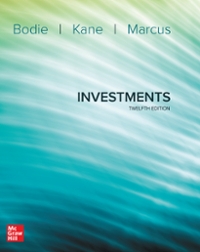Question
1 Consider two banks, big buck bank and trust zot . Both have $100 billion in assets, but different holdings of interest-rate sensitive and fixed-
1
Consider two banks, big buck bank and trust zot . Both have $100 billion in assets, but different holdings of interest-rate sensitive and fixed- rate assets and liabilities. In particular, 80 percent of big buck banks assets and 40 percent of its liabilities (plus capital) are rate sensitive; by contrast, 40 percent of trust zots assets and 70 percent of its liabilities (plus capital) are rate-sensitive. Using simple gap analysis, calculate the change in each banks profits when interest rates fall unexpectedly by 5 percentage points.
2
Discuss the validity and where appropriate the invalidity of the following statements:
(a) When interest rates are near their long-run normal values, there is very little need for banks
to be concerned about their exposure to interest-rate risk.
(b) When excess reserves earn no interest, banks have no incentive to hold them at all.
(c) A banks incentive to diversify its assets is limited by the adverse selection problem.
3
Why is it necessary for the regulators to impose minimum capital- holding restrictions on banks, when holding capital reduces the likeli- hood that a bank will become insolvent?
4
Explain why the falling number of banks in the United States, due in large part to the removal of branching restrictions and impediments to nationwide branching, could reflect an increase in competition and, therefore, a healthier banking system.
5
Explain why the falling number of banks combined with the consoli- dation of banks with other financial institutions, such as investment banks, possibly leads to a more fragile financial market system in the United States.
6
What are the costs of eliminating deposit insurance?
7
Discuss the validity/invalidity of the following statement: The prob- lems of asymmetric information can explain why those having the greatest access to funds through financial markets are precisely those who have the smallest need to borrownamely, the wealthiest.
Step by Step Solution
There are 3 Steps involved in it
Step: 1

Get Instant Access to Expert-Tailored Solutions
See step-by-step solutions with expert insights and AI powered tools for academic success
Step: 2

Step: 3

Ace Your Homework with AI
Get the answers you need in no time with our AI-driven, step-by-step assistance
Get Started


